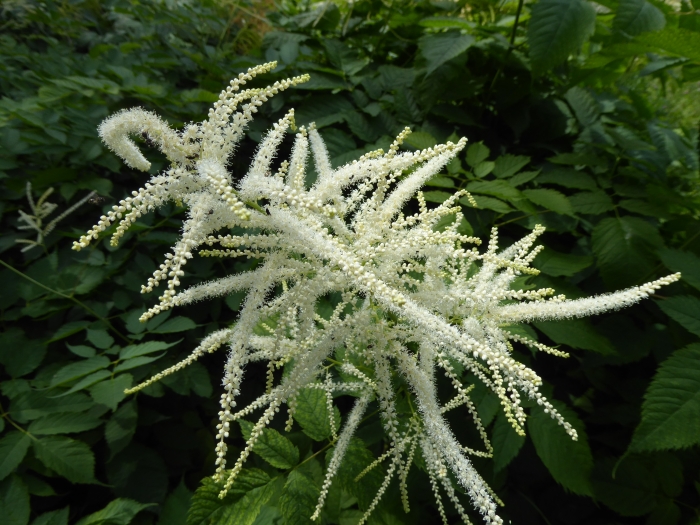Goat’s Beard
(Aruncus dioicus)
Goat’s Beard (Aruncus dioicus)
/
/

Syrio
CC BY-SA 4.0


















































































Estimated Native Range
Summary
Goat’s Beard is valued for its ornamental qualities, including its striking flower plumes and its ability to thrive in shady conditions, making it an excellent choice for woodland gardens, shaded borders, and water area plantings. It is recognized for its ease of maintenance and has received the Royal Horticultural Society’s Award of Garden Merit. While it prefers moist, well-drained soils, it is adaptable to a range of soil conditions and can tolerate full sun to part shade. It is important to note that Goat’s Beard can be quite large when mature, so it should be given ample space to spread.CC BY-SA 4.0
Plant Description
- Plant Type: Herb
- Height: 4-6 feet
- Width: 2-4 feet
- Growth Rate: Rapid
- Flower Color: Cream, White
- Flowering Season: Spring, Summer
- Leaf Retention: Deciduous
Growth Requirements
- Sun: Full Sun, Part Shade
- Water: Medium, High
- Drainage: Medium, Slow
Common Uses
Bee Garden, Bird Garden, Border Plant, Butterfly Garden, Deer Resistant, Edible*Disclaimer: Easyscape's listed plant edibility is for informational use. Always verify the safety and proper identification of any plant before consumption., Erosion Control, Hummingbird Garden, Low Maintenance, Rabbit Resistant, Rock Garden, Showy Flowers, Water Garden
Natural Habitat
Moist woodlands at higher altitudes across temperate regions
Other Names
Common Names: Bride’s Feathers , Buck’s Beard , Wald-Geißbart , Plymspirea
Scientific Names: Aruncus dioicus , Aruncus sylvester , Aruncus vulgaris , Spiraea aruncus , Aruncus dioicus var. dioicus , Ulmaria aruncus , Aruncus aruncus , Aruncus silvester , Aruncus allegheniensis , Aruncus americanus
GBIF Accepted Name: Aruncus dioicus (Walter) Fernald